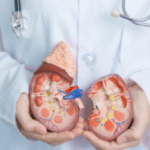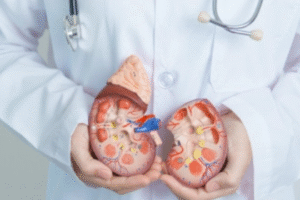Kidney stones are a common yet painful medical condition affecting millions worldwide. They are hard mineral deposits that form inside the kidneys, often causing intense pain, urinary issues, and discomfort. Fortunately, kidney stone treatment options have advanced significantly, offering effective relief and strategies to prevent recurrence.
Understanding Kidney Stones
Kidney stones develop when certain substances in the urine, like calcium, oxalate, and uric acid, become concentrated and crystallize. These stones can vary in size, ranging from tiny grains to larger, more obstructive formations. The symptoms typically include severe pain in the lower back or side, blood in urine, nausea, vomiting, and frequent urination.
Timely diagnosis and appropriate treatment are essential to manage the condition effectively and prevent complications.
Types of Kidney Stones
There are several types of kidney stones, and each type may require a different treatment approach:
- Calcium Stones: The most common type, often formed from calcium oxalate.
- Uric Acid Stones: More common in people who do not drink enough fluids or lose too much fluid.
- Struvite Stones: Usually develop after urinary tract infections.
- Cystine Stones: Result from a genetic disorder that causes the kidneys to excrete too much cystine.
Identifying the type of stone helps doctors tailor the most effective treatment and prevention plan.
Common Kidney Stone Treatments
1. Increased Fluid Intake
One of the simplest and most effective ways to treat small kidney stones is by drinking plenty of water. Adequate hydration helps flush out the urinary system, making it easier for the stone to pass naturally.
2. Pain Management
Passing a kidney stone can be extremely painful. Doctors usually prescribe pain relievers such as ibuprofen or acetaminophen to help manage discomfort during the process.
3. Medical Expulsion Therapy
Certain medications, like alpha-blockers, can relax the muscles in the urinary tract, making it easier for the stone to pass. This method is particularly helpful for stones located near the bladder.
4. Extracorporeal Shock Wave Lithotripsy (ESWL)
ESWL is a non-invasive procedure where shock waves are used to break kidney stones into smaller pieces, which can then pass through the urine more easily. It is commonly recommended for stones that are too large to pass naturally.
5. Ureteroscopy
In this procedure, a thin scope is inserted into the urethra and bladder to locate and remove the stone. Sometimes, a laser is used to break the stone into smaller fragments.
6. Percutaneous Nephrolithotomy
For very large or complex stones, this surgical procedure involves making a small incision in the back to remove the stone directly from the kidney.
7. Parathyroid Gland Surgery
If kidney stones are caused by overactive parathyroid glands, surgical removal of the affected glands may be necessary to prevent future stone formation.
Prevention of Kidney Stones
Preventing kidney stones is often possible by making simple lifestyle and dietary changes, including:
- Drinking plenty of fluids throughout the day
- Limiting salt and animal protein intake
- Avoiding foods high in oxalates, like spinach and nuts
- Maintaining a healthy weight
- Following a doctor-recommended diet plan based on the stone’s composition
Regular medical checkups and urine tests can also help monitor stone-forming tendencies and prevent recurrence.
Conclusion
Kidney stones can be a painful and disruptive health issue, but with proper diagnosis and treatment, they are manageable. From natural remedies like hydration to advanced medical procedures like ESWL and ureteroscopy, kidney stone treatment offers many options tailored to individual needs. Early intervention not only relieves pain but also reduces the chances of future stones.














